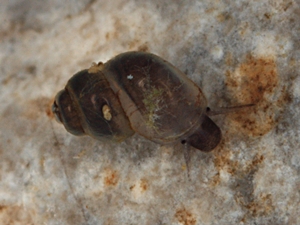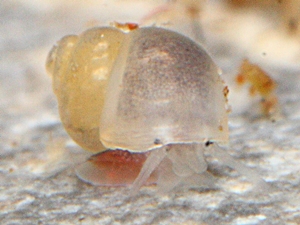| Diese Seite auf Deutsch! |
 Bythinella cylindrica, Family Bythinellidae. Picture: © Alexander Mrkvicka, Vienna. |
|
 Belgrandiella wawrai, Family Hydrobiidae. Picture: © Alexander Mrkvicka, Vienna. |
|
Systematik der Truncatelloidea Caenogastropoda > Littorinimorpha > Truncatelloidea |
|
|
Superfamily Truncatelloidea Source: WoRMS: MolluscaBase eds. (2025): Truncatelloidea J.E. GRAY, 1840. |
According to the latest classification used in the WoRMS database, the system displayed on the right is currently applied.
Recent molecular studies (Wilke et al., 2001) have shown that spring snails in the strict sense, such as the genus Bythinella, do not in fact belong to the Hydrobiidae, but rather to a separate family within the Rissooidea: the Amnicolidae.
In contrast, the Hydrobiidae do include various groups of spring-dwelling snails, such as Belgrandiella pareyssii, the thermal spring snail, which shares its habitat in warm springs (e.g. in Bad Vöslau, Lower Austria) with the thermal nerite (Theodoxus prevostianus) and the thermal river snail (Esperiana daudebartii).
Not a member of the Hydrobiidae is the well-known New Zealand mud snail (Potamopyrgus antipodarum), an invasive species introduced to many parts of the world. It is assigned to a separate family, the Tateidae.
Another distinct family within the Truncatelloidea are the Lithoglyphidae (gravel snails), represented in Central Europe by the river pebble or gravel snail (Lithoglyphus naticoides).
Also part of the Truncatelloidea is the family
Bithyniidae, or faucet snails, such as Bithynia tentaculata.
The table on the right is intended to help users navigate and orient
themselves among the various species pages.
Literature:
|